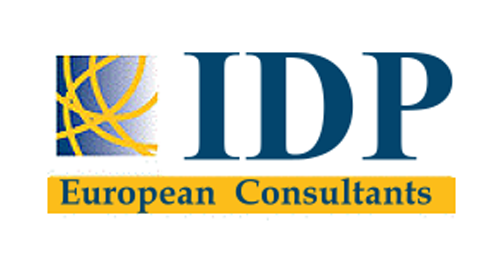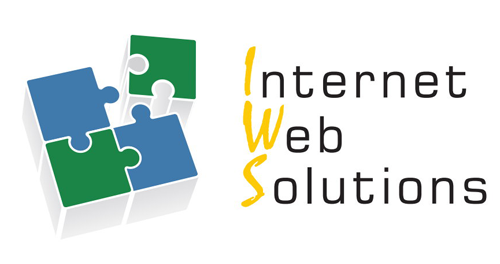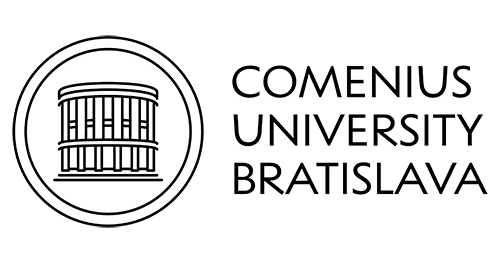|
Teaser
Get a step-by-step guide to building your own business model - and start seeing success right away. Profitable and sustainable: Explore the keys to building a business model that can stand the test of time. The ultimate guide to business models: Unleash your company's full potential with expert insights and strategies.
Video
| ||||||||||||||||||||||||||||||||||||||||||||||||||||||||||||||||||||||||||
|
MSME business models (BM) MSME business models (BM)Click to read

Sidenote: there are also so-called ‘social enterprises’. Their primary goal is to have a social impact, and not to maximize profit for the sake of owners – yet they also have to have a good business/operational plan that allows them to be sustainable (see RESTART Training Module 5. Sustainable, social, and green entrepreneurship)
Basic modelsClick to read

The basic model differentiates between fix and variable costs: Fix costs: that need to be paid regardless of how much product or service you sell.
One-time, set-up costs include legal fees for creating the company, logo and web design, etc. Calculate all costs! Use online tools if needed. Consider cost-efficient solutions. The basic model must be built on a preliminary market research that investigates in details:
Rules of thumbsClick to read
 A business model is a general framework, a main and general approach to running your business. The business plan builds on this, with a more detailed and structured set of information, tailor-made for your business. In a slightly different approach, the business model establishes your revenue-making process while the business plan defines your goals and strategies. In all concepts, the business plan is derived from the business model. When setting up your business plan:
Calculate costs and revenues on at least a yearly basis, better on a 3-year basis in order to:
Look at issues from all angles to find hidden costs and potential for additional revenues.
Differentiate between costs and investments! (in other terms: expenses and expenditures). Be motivated to cut costs where it does not hurt, but:
Typical ways to financing an enterpriseClick to read
 Typical ways to financing an enterprise:
Traditional business models (BM) Traditional business models (BM)Click to read
 We call “traditional business models” the models defining our economies before they were completely disrupted by the emergence of transformative IT solutions – first the internet, then mobility, and nowadays ML and AI (machine learning and artificial intelligence).
In other words, the traditional models characterize the typical business behaviours we see throughout the 20th century. Sidenote on industrial revolutions: throughout economic history, major innovations have forced existing business models to transform and adapt to new possibilities and conditions. Historians credit the emergence of farming, later the emergence of manufacturing responsible for a complete shift in existing “business models”. The first industrial revolution (due to the steam engine and mechanization), the second (due to the invention of electricity and division of labor in industries), the third (by establishing global production chains in the 2nd half of the 20th century), and the fourth (supported by IT and robotization) all forced economic actors to re-think their strategies and business models. The 5th revolution, driven by new IT developments and artificial intelligence, is at our doorstep – we are experiencing the shift to new models in our everyday.
B2CClick to read

In a B2C business model, the entrepreneur has to plan for….
B2BClick to read

In a B2B business model, the entrepreneur has to plan for….
FranchiseClick to read

In the franchise model, the entrepreneur has to plan for….
MSMEs in a domestic economyClick to read
 When an MSME operates in a specific local environment - in its city, county, region, or country – it has to meet specific requirements:
Operating only on or below a domestic market also has advantages, compared to being an international/global economic player:
Business models of the 21st century Business models of the 21st centuryClick to read

European and global marketsClick to read
 The globalization of media and business in the 2nd half of the 20th century paved the way for the global production and innovation chains that surfaced at the end of the 20th century. This global economic model was built on optimizing cost-effectiveness (often neglecting the negative human, democratic and environmental aspects also associated with low-cost production). While several events in the 21st century have slowed down or even turned back globalization trends (such as geopolitical events, the rise of China’s independent research, development, and innovation (R&D&I) capacities, the COVID-19 crisis, the realization of the effect of global transport on climate change, the current energy crisis and oil/gas dependency, etc.) several other factors further enhanced global production and distribution of products and services (such as wider and wider availability of broadband internet connections, the development of remote working and global, virtual teamwork (RESTART Training Module 1), overcoming several language barriers via machine learning technologies, etc.). The European Union has made it a key priority to increase European economic competitiveness by creating the Single European Market, which is built on a common set of regulations and standards that allow European companies to relatively easily operate across borders, offer products and services, use banking, legal, taxing and consultancy services without the necessity of opening up daughter companies in each of the other countries. To operate on the European market, familiarize yourself with the respective regulations, require an EU VAT number, and make a detailed market analysis of whether it is worth it for your company to invest in internationalization. Not all new companies must directly compete on the global market, but the economic milieu, the availability of options, and general trends must make each new company aware of their position not only in the domestic but in the European and global markets as well. Start-upsClick to read
 Most businesses start as micro- and small businesses (though there are examples of the opposite as well, large companies created by mergers, acquisitions, or larger holdings breaking up). Yet, at a very early point, they can be set on one of two significantly different tracks: they either become a small business or a start-up. What is the difference?
Start-ups build their business model on technology that allows them not only to duplicate or triple their economic performance but to multiply by tens, hundreds, or thousands in just under a short period of a couple of months/years. Successful start-ups are often “born-global” – even from the start, they offer products – but much more often, services – that are demanded across the globe, maybe with minor localization efforts. Start-ups are always very innovative and include a high-risk factor. Just a small share of start-ups succeed on the international, and an even smaller share on the global scale. Start-up funding must include risk-friendly capital involvement at the early stages. A typical cycle: Other new business modelsClick to read
 The new business models described below are sometimes working independently, but sometimes as a combination of the models below. In each case, a unique decision must be made about the ideal combination of these elements. Sharing economy: The sharing economy as a business model is built on sharing resources, existing goods, and services among potential users. It is almost always built on the use of technology as a tool for sharing. Sharing may include the creation, production, distribution, sale, or use of the given products and services. The sharing economy can also be B2C (for example Airbnb) or B2B (e.g. coworking offices). Promoters of the sharing economy often claim that it is a resource-efficient and environment-friendly solution. Others point out that the sharing economy often allows tax evasion and neglects otherwise existing industrial regulations.
Platform economy is similar to the sharing economy but emphasizes the role of the technological platform that connects the different small economic agents operating under the platform. Let it be Amazon or Uber, the platform economy allows individuals otherwise not capable of reaching a wide circle of customers to reach out and offer their products/services. The business model is also characterized by serious imbalances of power (between the platform and the individual players).
The on-demand model is also connected to technological developments. It offers a unique chance for the client to time the consummation of the product/service exactly to their preference. Modern food delivery services (foodpanda, Wolt) and streaming media (Spotify, Netflix, etc.) are built on this model.
Servitization and subscription model: The servitization is built on the concept of re-interpreting traditional products and one-time services as a continuously provided series of services, usually by supporting ongoing improvements, updates, upgrades, maintenance, and customer service. They can be charged monthly, bi-annual, or annual subscription fees. Learn more about servitization in RESTART Training Module 6. Freemium model: The freemium model offers a simplified construction of the services for a free subscription, but more advanced – premium – features are priced. This helps the branding, marketing, and communication of the service by getting it to a large set of customers while generating income from professional clients. Such examples are Spotify, LinkedIn or Evernote and many others. Localization model: Localization is built on the idea of a general product/service being adapted to the local environment, to the given specific societal-economic conditions (language, preferences, cultural values, purchasing power, etc.) In this case, you have to make sure that you have the legal rights to adapt the original product/service. Setting up your own business model Setting up your own business modelClick to read

SWOTClick to read
 First, conduct your market research – or have someone conduct it for you – as discussed in Chapter 1.1. Be familiar with the potential customer base, their preferences and demand capacity, with your competitors, and with potential alliances. Then position yourself, and your project idea and try to identify your planned business’ strengths, weaknesses, opportunities, and threats. Put them down in a matrix:
Further support: examples, best practices, step-by-step guide Based on your SWOT, you will be able to determine the main trends for your business model.
Based on your answers to such questions, you can sketch up the main design framework for your business model. Techniques and tools Click to read
 Based on the selected business model, you can put together your business plan. A business plan is a written document that outlines the specific strategies, goals, and tactics that an MSME (micro, small, and medium enterprise) will use to achieve its operational and profit-making objectives. Essentially, a business plan is a blueprint for the company's success, providing a roadmap for its growth and development over time. You can use various techniques and tools:
Once you have your business model figured out, make sure you create the followings: Alliances and networkingClick to read
 Your last homework is to find alliances, mentors, and supporters – do the networking! Contact:
Remember: not everyone will be able to help you with useful information or real help but keep on looking for support, mentors, and partners. Never hesitate to learn from others. Remember: not only good practices but failures and bad experiences are also extremely useful lessons for the future. Summing up Summing upClick to read

|
Objectives/goals:
- Understand the concept of business models (BM) and why they are important for an MSME
- Know how traditional MSME BM work, what are the basic elements
- Recognise what has changed in MSME BMs in the 21st century and in the post-COVID era
- Set up your own BM
- Reach out for more information and support in further developing your BM
- With a hypothetical example start-up (called HIDS) you can find an example for a one-pager, business pitch, cash-flow tables and financing strategies
Critical thinking
Analytical thinking
Problem-solving
Business management
Resilience
Networking
Initiative
Understanding complexity
Innovation
Leadership
Digital marketing
Digital skills
Communication
Cooperation
Advertising
E-commerce
Sustainability
✓ Understanding what business model means;
✓ Understanding the traditional and 21st century business models
✓ Understanding how to create their own business model
Keywordstraditional business models, sharing economy, platform economy, on-demand model, resilience
Bibliography
- AI Multiple. (2023). Innovation Procurement in 2023: What it is & Best Practices. https://research.aimultiple.com/innovation-procurement/
- Belmejdoub Quotb, Amine. (2016). Business Model Canvas: Google Report. 10.13140/RG.2.1.4241.9601/1. https://www.researchgate.net/publication/301675127_Business_Model_Canvas_Google_Report
- Bplans. (2022). How to Estimate Realistic Business Startup Costs — 2022 Guide. https://articles.bplans.com/estimating-realistic-start-up-costs/
- Bplans. Business Calculators. https://www.bplans.com/business-calculators/
- Brecht, Patrick & Hendriks, Daniel & Stroebele, Anja & Hahn, Carsten & Wolff, Ingmar. (2020). Business Model Validation - How B2B Startups can use Business Experiments. https://www.researchgate.net/publication/347355881_Business_Model_Validation_-_How_B2B_Startups_can_use_Business_Experiments
- Britannica. (2023). The first Industrial Revolution. https://www.britannica.com/event/Industrial-Revolution/The-first-Industrial-Revolution
- Business Europe. Alliance for a Competitive European Industry. https://www.businesseurope.eu/alliance-competitive-european-industry
- CFI. (2023). Scalability. https://corporatefinanceinstitute.com/resources/management/scalability/
- CFI. (2023). Variable Costs. https://corporatefinanceinstitute.com/resources/accounting/variable-costs/
- Code Brew Labs. (2021). Understanding the On-Demand Business Model. https://www.code-brew.com/understanding-the-on-demand-business-model/
- Coworker. (2018). What Is Coworking? https://www.coworker.com/mag/what-is-coworking
- Deloitte. (2019). The rise of the platform economy. https://www2.deloitte.com/content/dam/Deloitte/nl/Documents/humancapital/deloitte-nl-hc-the-rise-of-the-platform-economy-report.pdf
- DeVry University. (2020). The Impact of Technology on Business: A Lesson in Disruption [infographic]. https://www.devry.edu/blog/impact-of-technology-on-business-infographic.html
- Eban. (2018). Angel Investing Explained. https://www.eban.org/angel-investing-explained/
- Enterprise Europe Network. Find your local contact point. https://een.ec.europa.eu/local-contact-points
- Enterprise Europe Network. https://een.ec.europa.eu/
- Entrepreneur. (2014). 6 Great Business Models to Consider for a Startup. https://www.entrepreneur.com/business-news/6-great-business-models-to-consider-for-a-startup/233451
- Eubic. Europe’s leading innovation partner network, fast-tracking your connectivity and certifying your value. https://ebn.eu/
- Eurochambers. (2020). Who are we. https://www.eurochambres.eu/about/who-we-are/
- Eurofound. (2023). Employment and labour markets. https://www.eurofound.europa.eu/topic/employment-and-labour-markets
- European Chamber of Commerce. https://www.eurchamber.com/
- European Commision. (2022). EU programmes and funds financed from the EU budget and NextGenerationEU. https://commission.europa.eu/funding-tenders/find-funding/eu-funding-programmes_en
- European Commision. (2022). European Digital Innovation Hubs Network. https://european-digital-innovation-hubs.ec.europa.eu/home
- European Commision. (2022). Venture capital. https://single-market-economy.ec.europa.eu/access-finance/policy-areas/venture-capital_en
- European Commission (2022). Digital Strategy. https://commission.europa.eu/publications/european-commission-digital-strategy_en
- European Commission (2022). Internal Market, Industry, Entrepreneurship and SMEs. https://single-market-economy.ec.europa.eu/sectors/tourism/eu-funding-and-businesses/business-portal/internationalisation-tourism-businesses/international-market-selection_en
- European Commission (2022). Leading innovation through EU research. https://european-union.europa.eu/priorities-and-actions/actions-topic/research-and-innovation_en
- European Commission. (2022). Information and communication technologies. https://ec.europa.eu/regional_policy/policy/themes/ict_en
- European Commission. (2022). Intellectual property rights. https://commission.europa.eu/business-economy-euro/doing-business-eu/intellectual-property-rights_en
- European Commission. (2022). Single market and standards. https://single-market-economy.ec.europa.eu/single-market_en
- European Commission. (2022). Social enterprises. https://single-market-economy.ec.europa.eu/sectors/proximity-and-social-economy/social-economy-eu/social-enterprises_en
- Evernote. https://evernote.com/
- Failory. (2022). The Top 20 Accelerators & Incubators in Europe in 2022. https://www.failory.com/blog/accelerators-incubators-europe
- Forbes. (2021). Researching A New Market? Follow These 15 Expert Strategies. https://www.forbes.com/sites/forbesbusinessdevelopmentcouncil/2021/01/29/researching-a-new-market-follow-these-15-expert-strategies/?sh=70b17eb8dabc
- Foss, Nicolai & Saebi, Tina. (2015). Business Models and Business Model Innovation. 10.1093/acprof:oso/9780198701873.003.0001. https://www.researchgate.net/publication/299874833_Business_Models_and_Business_Model_Innovation
- Franchise Business Review. (2018). The Franchise Business Model 101 – Introduction and How Does It Work. https://franchisebusinessreview.com/post/franchise-business-model/
- Freepik. https://www.freepik.com/free-vector/franchise-small-business-branch-expansion-banner_8188895.htm#query=franchise&position=0&from_view=search&track=sph
- Full Scale. (2020). Business Model Vs Business Plan: What’s the Difference? https://fullscale.io/blog/business-model-vs-business-plan/
- Geekflare. (2022). Create the Perfect Business Plan Using These 9 Tools. https://geekflare.com/business-plan-software/
- Geissdoerfer, Martin & Pieroni, Marina & Pigosso, Daniela & Soufani, Khaled. (2020). Circular business models: A review. Journal of Cleaner Production. 277. 123741. 10.1016/j.jclepro.2020.123741. https://www.researchgate.net/publication/343810965_Circular_business_models_A_review
- Gobookmart. (2022). 8 Books To Read If You Are Thinking of Starting A Company. https://gobookmart.com/8-books-to-read-if-you-are-thinking-of-starting-a-company/
- Growthink. (2023). Business Model vs. Business Plan. https://www.growthink.com/businessplan/help-center/business-model-vs-business-plan
- Gust de Backer. (2022). Market Research (2023): 12 Techniques for Effective Market Research. https://gustdebacker.com/market-research/
- Harvard Business Review. (2007). The Innovation Value Chain. https://hbr.org/2007/06/the-innovation-value-chain
- Harvard Business Review. (2015). What Is a Business Model? https://hbr.org/2015/01/what-is-a-business-model
- Harvard Business School Online. (2021). 6 PROS AND CONS OF GLOBALIZATION IN BUSINESS TO CONSIDER. https://online.hbs.edu/blog/post/pros-and-cons-of-globalization
- Hubspot (2023). How to Do Market Research: A Guide and Template. https://blog.hubspot.com/marketing/market-research-buyers-journey-guide
- Indeed. (2022). Expenditures vs. Expenses: Definitions and Key Differences. https://www.indeed.com/career-advice/career-development/expenditures-vs-expenses
- Indeed. (2023). Business Model vs. Business Plan: What’s the Difference? https://www.indeed.com/career-advice/career-development/business-model-vs-business-plan
- Institute of Entrepreneurship Development. (2019). The 4 Industrial Revolutions. https://ied.eu/project-updates/the-4-industrial-revolutions/
- International Trade Administration. Research Foreign Markets. https://www.trade.gov/international-market-research
- IntoTheMinds. (2020). Market research in the EU: The 10 best data sources. https://www.intotheminds.com/blog/en/market-research-eu-10-data-sources/
- Investopedia. (2022). Amortization vs. Depreciation: What's the Difference? https://www.investopedia.com/ask/answers/06/amortizationvsdepreciation.asp
- Investopedia. (2022). Sweat Equity: What It Is, How It Works, and Example. https://www.investopedia.com/terms/s/sweatequity.asp
- Investopedia. (2022). SWOT Analysis: How To With Table and Example. https://www.investopedia.com/terms/s/swot.asp
- Learning Center. (2020). How To Do a SWOT Analysis: Step-by-Step Guide. https://diib.com/learn/how-to-do-a-swot-analysis/
- LinkedIn. https://www.linkedin.com
- Li, Jiuding & Gao, Shuaiming. (2021). Platform Economy and Internet Platform Monopoly. BCP Business & Management. 13. 160-163. 10.54691/bcpbm.v13i.84. https://www.researchgate.net/publication/356529590_Platform_Economy_and_Internet_Platform_Monopoly
- Linkflow. (2020). 12 Hidden Costs of Running a Business You Are Not Aware Of. https://smeloan.sg/blog/12-hidden-costs-of-running-business/
- LisaSheppard. (2021). Cost vs Investment. https://www.businesswithlisa.com/blog/cost-vs-investment
- Maryville University. Traditional Types of Business Models. https://online.maryville.edu/business-degrees/traditional-types-business-models/
- Merchant Maverick. (2020). 6 FINANCING OPTIONS FOR UP & COMING ENTREPRENEURS (PLUS 4 EXPERT FUNDING TIPS TO GET YOU STARTED) https://www.merchantmaverick.com/entrepreneurs-financing/
- Nielsen C. & Lund M. (2014). SSRN Electronic Journal: An Introduction to Business Models. https://www.researchgate.net/publication/273634452_An_Introduction_to_Business_Models
- Noble S. M., Mende M., Grewal D. & Parasuraman A. (2022). The Fifth Industrial Revolution: How Harmonious Human–Machine Collaboration is Triggering a Retail and Service [R]evolution. https://www.sciencedirect.com/science/article/pii/S0022435922000288
- OECD. (2023). Digital. https://www.oecd.org/digital/
- OECD. SME and Entrepreneurship Financing. https://www.oecd.org/cfe/smes/sme-entrepreneurship-financing.htm
- RESTART. Digitalization and Online Learning. https://www.restartproject.eu/ficha.php?id_ficha=10
- RESTART. Servitization – Transforming products into services. https://www.restartproject.eu/ficha.php?id_ficha=6
- Runn. (2022). 13 Ways to Improve Cost Efficiency in Your Project Business. https://www.runn.io/blog/how-to-improve-cost-efficiency
- Smartsheet. (2020). Free Small Business Budget Templates. https://www.smartsheet.com/content/small-business-budget-templates
- Spotify. https://open.spotify.com/
- StuTalks. (2021). Friends Family and Fools ,The 3F’s for Funding. https://stutalks.com/3f-s-friends-families-fools/
- The 2012 Brookings Blum Roundtable Policy Briefs. (2012). The Importance of Business Models. https://www.brookings.edu/wp-content/uploads/2016/06/10-business-models-kubzansky.pdf
- The balance. (2019). 14 Exceptionally Useful Tools for Writing a Business Plan. https://www.thebalancemoney.com/business-plan-writing-tools-2951568
- The CEO Magazine. (2022). How the fifth industrial revolution will impact the future of work. https://www.theceomagazine.com/business/innovation-technology/fifth-industrial-revolution/
- The Telegraph. (2015). The top five hidden costs for SMEs. https://www.telegraph.co.uk/business/sme-home/hidden-costs-for-smes/
- The World Bank. Global Value Chains. https://www.worldbank.org/en/topic/global-value-chains
- U.S Small Business Administration. Market research and competitive analysis. https://www.sba.gov/business-guide/plan-your-business/market-research-competitive-analysis
- Upmetricsblog. (2021). Business Model vs Business Plan What’s the Difference? https://upmetrics.co/blog/business-model-vs-business-plan
- Vallas, Steven & Schor, Juliet. (2020). What Do Platforms Do? Understanding the Gig Economy. Annual Review of Sociology. 46. 10.1146/annurev-soc-121919-054857. https://www.researchgate.net/publication/340823562_What_Do_Platforms_Do_Understanding_the_Gig_Economy
- Venngage. (2022). 20+ SWOT Analysis Templates, Examples & Best Practices. https://venngage.com/blog/swot-analysis-templates/
- Visual Paradigm. What is SWOT Analysis? https://www.visual-paradigm.com/guide/strategic-analysis/what-is-swot-analysis/
- Wework. (2017). What is bootstrapping in business? https://www.wework.com/ideas/professional-development/what-is-bootstrapping-in-business
- World Economic Forum. (2016). The 'Platform Economy' has arrived. Here's what you need to know about it. https://www.weforum.org/agenda/2016/07/platform-economy-boon-or-doom
- World Economic Forum. (2019). An economist explains the pros and cons of globalization. https://www.weforum.org/agenda/2019/04/an-economist-explains-the-pros-and-cons-of-globalization-b2f0f4ae76/
- Your Europe. (2022). Check a VAT number (VIES). https://europa.eu/youreurope/business/taxation/vat/check-vat-number-vies/index_en.htm
Entry-level:
Ovans, A.: What Is a Business Model? In Harvard Business Review, January 23, 2015. Available at: https://hbr.org/2015/01/what-is-a-business-model
Intermediate:
Cohan, S.P: 6 Great Business Models to Consider for a Start-up. In: Entrepreneur, 30A April 2014. Available at: https://www.entrepreneur.com/business-news/6-great-business-models-to-consider-for-a-startup/233451
Graduate:
Kubzansky, M.: The Importance of Business Models. The 2012 Brookings Blum Roundtable Policy Briefs Available at: https://www.brookings.edu/wp-content/uploads/2016/06/10-business-models-kubzansky.pdf
Nielsen, Christian & Lund, Morten. (2014). An Introduction to Business Models. SSRN Electronic Journal. 10.2139/ssrn.2579454. Available at: (PDF) An Introduction to Business Models (researchgate.net)
European Foundation for the Improvement of Living and Working Conditions: Employment and labour markets | Eurofound (europa.eu)
OECD readings on SME financing: SME and Entrepreneurship Financing - OECD
Further books to read:
8 Books To Read If You Are Thinking of Starting A Company - Gobookmart
The business model is the concept for the operational and profit-making model of an MSME: turning it into a business plan defines the exact function of how the company works and how it makes profit.
Business expenses are the costs of running a company and generating sales.
Revenue refers to the income a business generates from its normal operations. It is the gross or top-line income figure from which expenses are subtracted to calculate net income.
A business plan is a written document that outlines the specific strategies, goals, and tactics that an MSME (micro, small, and medium enterprise) will use to achieve its operational and profit-making objectives. Essentially, a business plan is a blueprint for the company's success, providing a roadmap for its growth and development over time.
Startups are young companies founded to develop a unique product or service, bring it to market and make it irresistible and irreplaceable for customers. Rooted in innovation, a startup aims to remedy deficiencies of existing products or create entirely new categories of goods and services, disrupting entrenched ways of thinking and doing business for entire industries.
Related training material
 Play Audio
Play Audio 




 Case studies:
Case studies:










